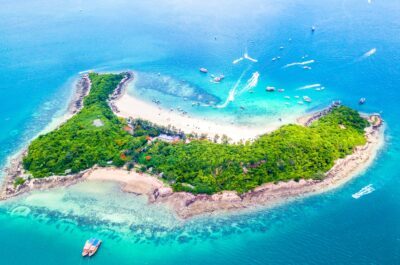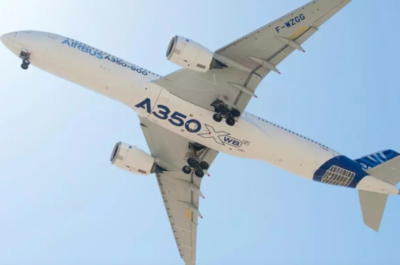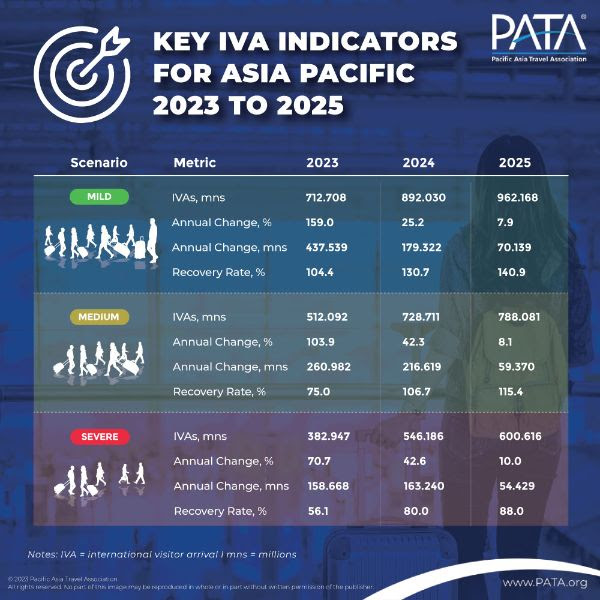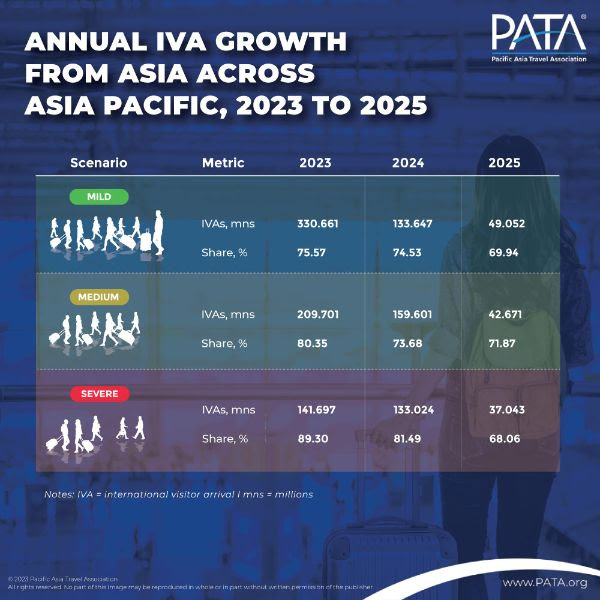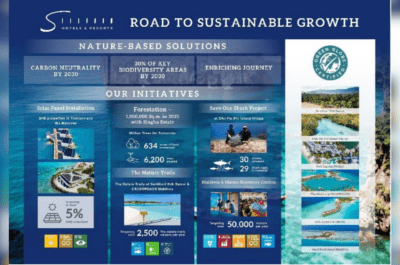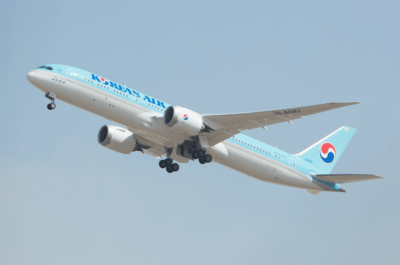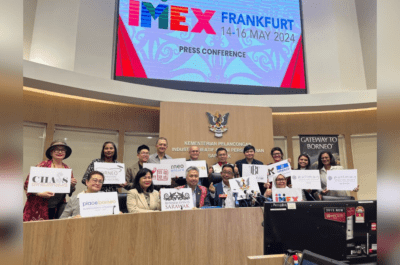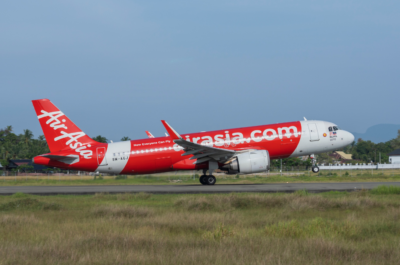The annual increase in the absolute number of international visitor arrivals (IVAs) in 2023 is predicted to range from 158.7 million to 437.5 million under the severe and mild scenarios respectively, lifting the total volume of visitor arrivals to between 382.9 million and 712.7 million, under those same scenarios.
BANGKOK – The latest forecasts from the Pacific Asia Travel Association (PATA) predict strong annual increases in inbound visitor numbers for Asia Pacific under each of the mild, medium, and severe scenarios in 2023, with growth rates ranging from 71% under the latter scenario conditions to as much as 104% under the mild scenario.
Following the earlier release of the Executive Summary, the Full Report released today gives a deeper quantitative overview of the international visitor landscape into and across the Asia Pacific region at the regional, sub-regional and destination levels out to 2025. This is done at both the annual and, where data permit, quarterly levels over the same period, and by scenario. In addition, the growth in key source markets between 2023 and 2025 is forecast for Asia Pacific as a whole, and for each of the regions/sub-regions as covered in the report.
The annual increase in the absolute number of international visitor arrivals (IVAs) in 2023 is predicted to range from 158.7 million to 437.5 million under the severe and mild scenarios respectively, lifting the total volume of visitor arrivals to between 382.9 million and 712.7 million, under those same scenarios.
Substantial annual increases in IVA numbers are also forecast for 2024 and 2025, under all three scenarios, although the volume of these gains will slowly reduce over the years as the absolute volume base of foreign arrivals increases.
The impact of these increases is such that under the mild scenario, a return to better than the benchmark number of IVAs in 2019 is predicted to occur in 2023, while under the medium scenario that position is projected for 2024. Under the severe scenario, however, even by 2025, the volume of international visitors into and across Asia Pacific is forecast to still fall short of the 2019 benchmark by around 12%.
The mix of source regions is forecast to remain dominated by flows from Asia Pacific markets into Asia Pacific destinations, with 2025 expected to return to roughly similar proportions as that of 2019, under all three scenarios.
These intra-regional proportionate flows differ for each Asia Pacific destination region, however, especially for the Americas and Asia, both of which rely heavily on intra-regional visitors. The Americas, as a source region for example, accounted for 55.4% of visitor numbers for the Americas in 2019, and this is predicted to gradually increase to between 56% and 57% in 2025, depending on the scenario that plays out at that time. The Asia-to-Asia flows accounted for 80.4% of total IVAs for that region in 2019, and this is forecast to reach between 80% and 82% by the end of 2025.
The Pacific as a destination region within Asia Pacific is somewhat different, however, since its source regions in 2019 were dominated by Asia which had a slim margin over the Americas. Those positions are forecast to change over the years to 2025, at which time both source regions under the mild scenario are predicted to generate roughly equal proportionate shares of IVAs into the Pacific. Under the medium and severe scenarios, however, the Americas is projected to have a slight relative share dominance in delivering IVAs into the Pacific by the end of 2025.
As IVA growth builds between 2023 and 2025, it is worth noting that the source markets of Asia collectively generate the bulk of the additional annual increases in absolute numbers of arrivals across Asia Pacific each year. Under the mild scenario, for example, the annual increase in IVAs from Asia in 2023 are forecast to number 330.7 million and account for three-quarters of the net increase in total IVAs between 2022 and 2023.
Across the years and under all scenarios, the visitor footprint of the Asian source markets, at the aggregate Asia Pacific level, is predicted to remain very strong, although with significant differences at the destination regions and sub-regions, however. The Americas, for example, already with a strong intra-regional visitor flow, is not surprisingly forecast to receive more than half of its annual increase in IVAs in both 2023 and 2025, under the mild scenario, from source markets within that same region. That proportion is predicted to reach as much as 68% under the medium scenario in 2024 and 78% under the severe scenario in that same year, and although the proportions may reduce a little by 2025, they are still predicted to favour the Americas very much as the main generator of annual IVA growth in absolute numbers into that same region.
As noted by PATA Chair Peter Semone, “these current forecasts are easily the most positive since 2019 and while inbound numbers are predicted to strongly increase each year to 2025, they will not do so evenly across the Asia Pacific destinations nor at the same rates. In addition, growth will not necessarily be by passive osmosis; work needs to be done for destinations to remain competitive and to deliver experiences to these visitors that consistently rate above and beyond their expectations. A blatant profit-grab at this time will resonate badly with visitors now and will work against destinations and operators in the future.”
“Now more than ever before, destinations need to work with host communities, operators, and visitors to deliver results and experiences that bring the best of the travel and tourism sector to the fore, across all involved parties and in a responsible, equitable, meaningful, and thereby sustainable manner. Such an approach will also create a certain resilience to future shocks as and when they appear, and rest assured that they will!,” added Mr. Semone.
What you will learn from this report:
- Forecast international visitor numbers for Asia Pacific between 2023 and 2025 by destination region, sub-region, and destination, highlighting changing demand preferences in the post-COVID era; and
- Forecasts and recovery patterns for 39 individual destinations facilitating the development of appropriate strategies over the next three years.
Theodore is the Co-Founder and Managing Editor of TravelDailyNews Media Network; his responsibilities include business development and planning for TravelDailyNews long-term opportunities.




![[PR] PR_Ascott and Vimut Hospital_2024](https://www.traveldailynews.asia/wp-content/uploads/2024/04/PR-PR_Ascott-and-Vimut-Hospital_2024-400x265.jpg)

